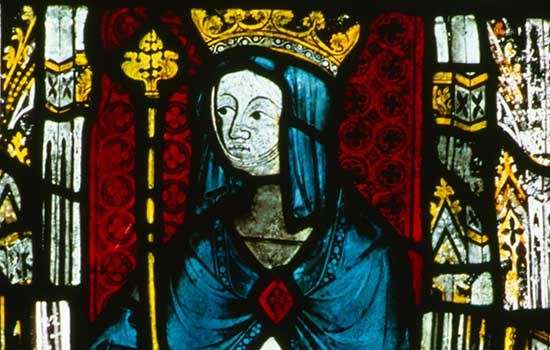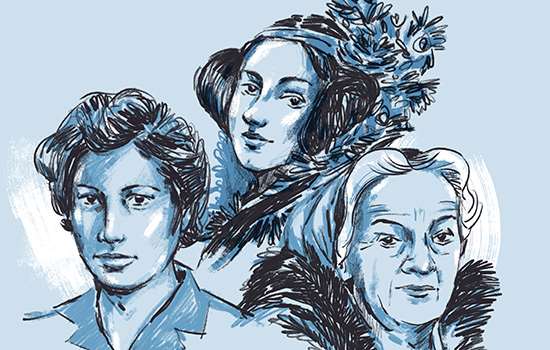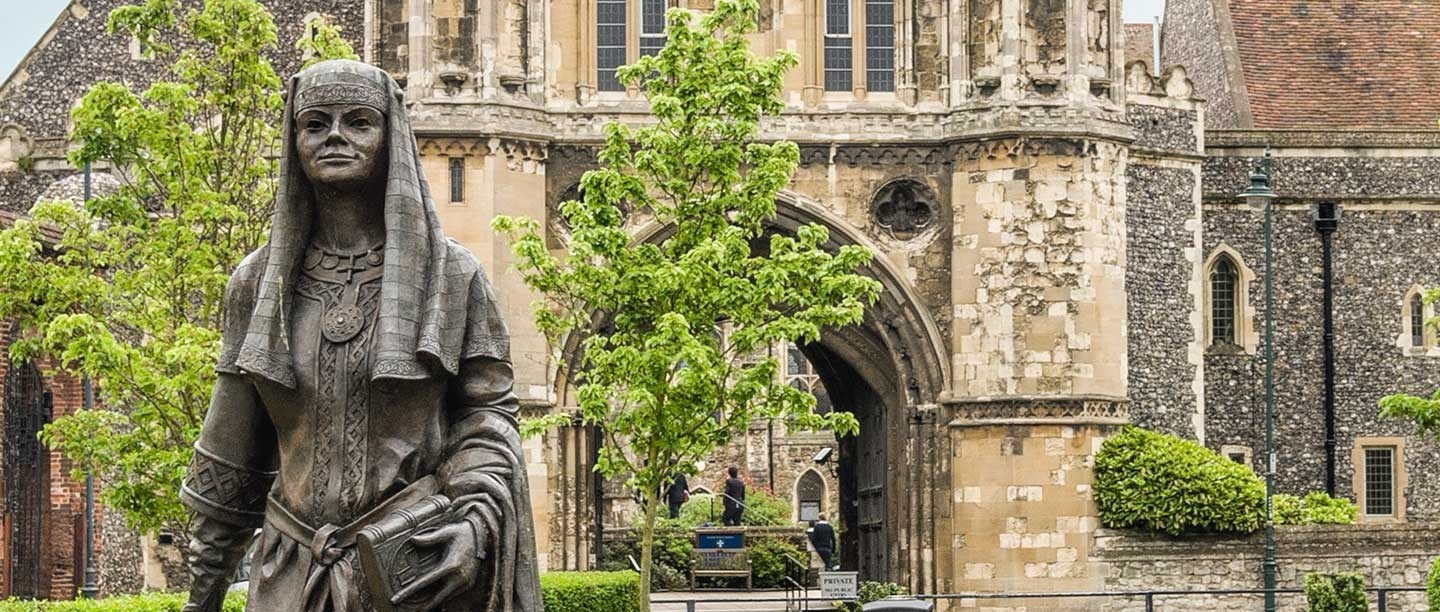Birth and Early Life
Queen Bertha of Kent is one of history’s enigmas. There are only a few surviving accounts of the 6th century and, like most women of that period, we hear of her primarily in connection with her male family members. However, there are a few things that we can work out.
Bertha seems to have been born in the early 560s. She was a Frankish princess – the daughter of Charibert I, King of Paris, and a woman named Ingoberga, whose parentage is unknown. Unfortunately, the marriage of Bertha’s parents does not seem to have been happy.
According to the 6th-century historian Gregory of Tours, Charibert took two of Ingoberga’s serving women as mistresses. In spite of Ingoberga’s attempts to dissuade him, he eventually left her for one of them. Charibert later married the other mistress and, since the two were sisters, was excommunicated. A fourth wife survived him at his death and a third mistress bore him a stillborn son.
This dysfunctional family situation is an interesting backdrop to the events of Bertha’s life. She is often shown as a semi-saintly Christian assisting in the ‘civilisation’ of her husband’s pagan country, but her own Christian family did not live up to the ideal.
Marriage
Bertha’s marriage to King Æthelberht of Kent is the main reason that anything is known about her. Gregory of Tours’ only mention of her is: ‘he [Charibert] had a daughter who afterwards married a husband in Kent and was taken there’.
As with her birth, it is not known exactly when her marriage to Æthelberht took place. The historian Bede, writing some 150 years after the event, implies that her parents were still alive. This puts the date before her mother’s death in 589 and probably before her father’s in 575. Bertha was therefore likely to have been in her early teens on her marriage, which was quite normal for an aristocratic woman of the period.
Bede also records that a condition of her marriage was that she should be allowed to ‘maintain inviolate the practice of the Christian faith and of her religion’. Bertha brought a Christian bishop named Leodheard with her to Kent as her confessor and they used the church of St Martin in Canterbury, which had existed since Roman times. This church was later taken over by St Augustine and his companions as their base of operations.
Bertha and St Augustine
St Augustine was a monk from Rome sent by Pope Gregory the Great on a mission to convert the pagan Anglo-Saxons to Christianity, beginning with the kingdom of Kent. King Æthelberht gave Augustine freedom to preach and reside in Canterbury, and did ultimately convert to Christianity.
Modern retellings of Augustine’s mission almost always include Bertha, suggesting that she played a role in welcoming Augustine and convincing Æthelberht to convert. However, medieval accounts do not actually describe any part played by the queen. Their aim was to record the actions of the saint and his companions.
Bede says that ‘the fame of the Christian religion had already reached [Æthelberht]’ as a result of his wife’s faith – a statement that gives her more impact than would be justified if it was her only role. By the 6th century, Christianity was an international religion and dominant in the Frankish kingdoms that were next to Æthelberht’s own. He would have been aware of the religion without his wife’s input.
Read more about St Augustine and his missionA letter from Rome
While she may not have introduced her husband to the Christian faith, it does seem that Bertha was expected to have a hand in Æthelberht’s conversion. A letter sent to Bertha by Pope Gregory in 601 implies that he felt she should have had a more active role and that she had been negligent in not converting her husband before Augustine’s arrival. He suggests she make up for this failure by encouraging her husband to convert his whole country now.
However, the Pope does give Bertha some credit for Augustine’s welcome in Britain. He describes what ‘great succour and what charity you have bestowed upon [Augustine]’. He compares her to Helena, the Christian mother of Constantine who became the first Christian emperor of Rome.
The Pope’s letter also gives us a tiny glimpse into Bertha’s life. He implies that she can read, describing her as ‘instructed in letters’, and that she has an international reputation: ‘your good deeds are known not only among the Romans … but also through various places’.
Gregory may have been trying to flatter a potential ally, but if so, he clearly felt that she was influential enough to be worth keeping on his side.
Later life and death
The date of Bertha’s death is almost as uncertain as her birth. She was definitely alive in 601 when Pope Gregory wrote to her, and tradition places her at the consecration of St Augustine’s Abbey in 604. She must have died some time before Æthelberht’s death in 616 as he seems to have had a second wife.
Ultimately Augustine’s mission of conversion was successful and England became a Christian country. However, this would take many decades and at the time of her death, even the conversion of Bertha’s own family was not complete. Her son Eadbald was still a pagan when he became king in 616.
Bertha is thought to have been buried under the step of St Martin’s church, where she had worshipped during her life in Kent.
Find out more
-

History of St Augustine's Abbey
Delve into the history of St Augustine’s Abbey, the monastery whose early history is closely linked to that of Bertha and her husband, King Æthelberht.
-

St Hild of Whitby
Learn about the life of another medieval woman who made her mark on English Christianity. St Hild of Whitby was the leader of one of the most important religious centres in the Anglo-Saxon world.
-

Women in history
Read about the remarkable lives of some of the women who have left their mark on society and shaped our way of life – from Anglo-Saxon times to the 20th century.

